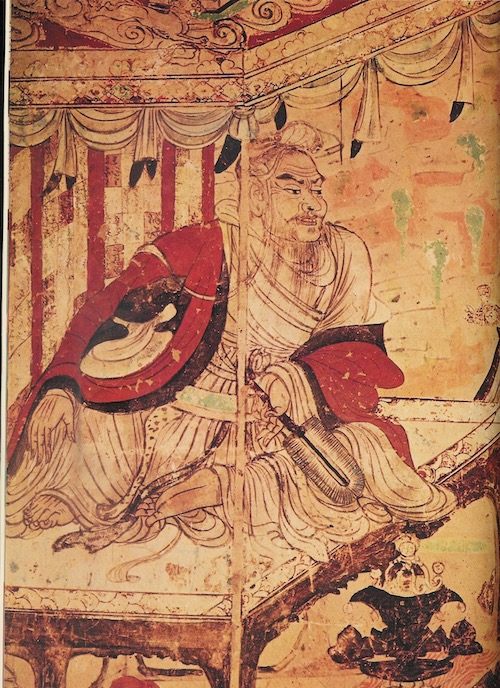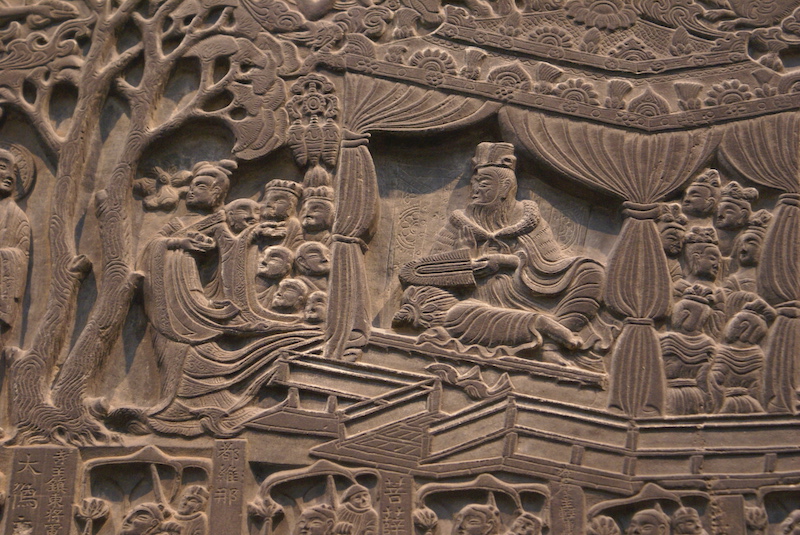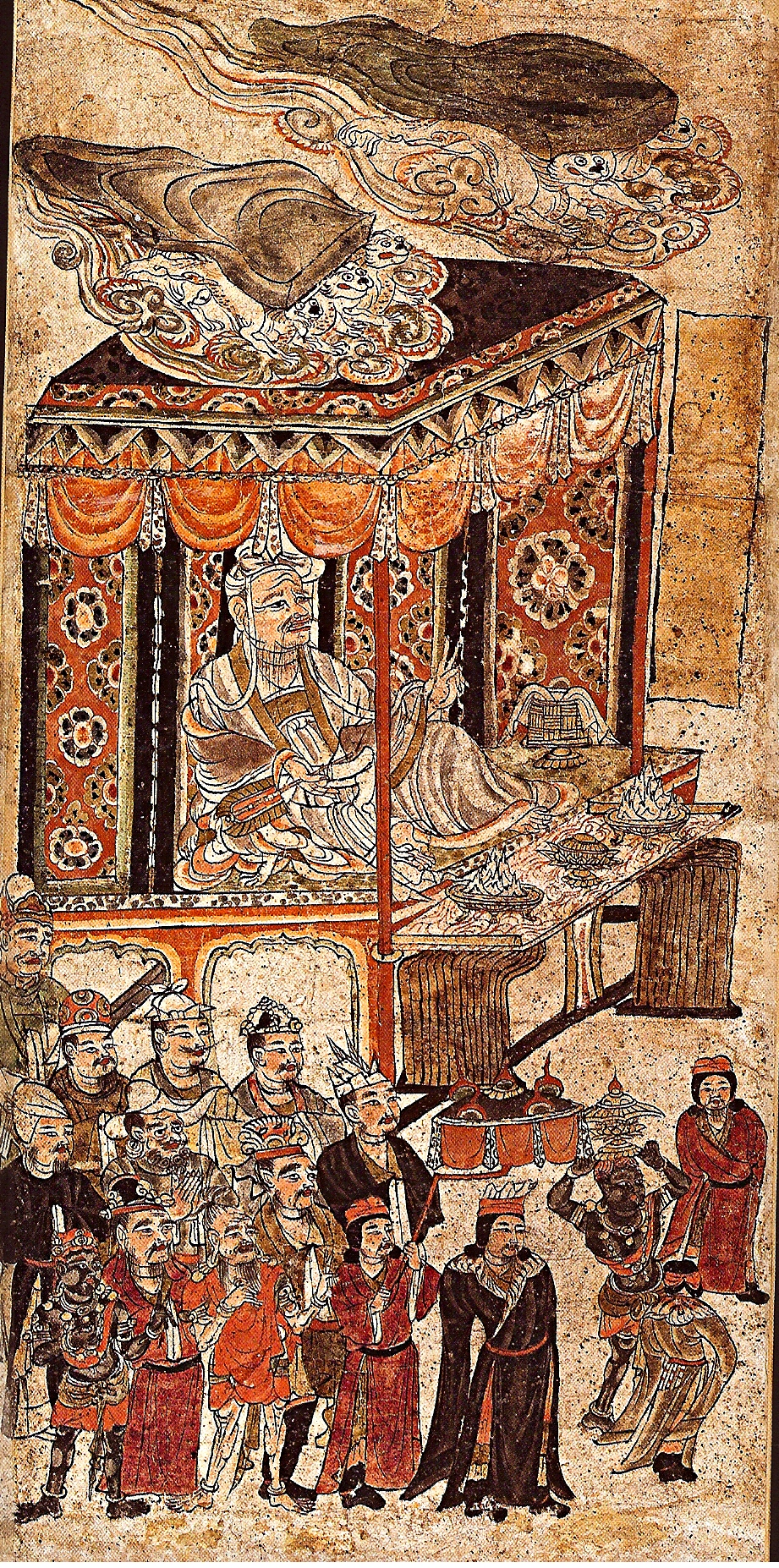Vimalakirti
BUDDHIST CENTER USA
The Vimalakirti Buddhist Center is focused on a modern approach to Buddhism by exploring ways to express the essence of Buddhism within contemporary culture. It attempts to link Buddhism with Western philosophy, psychology, literature and other forms of art such as theatre, dance and cinema.
The Center does not, presumptuously, seek to transform Buddhism ⎯ there is no need ⎯ but rather to find a 21st century expression of it; an expression that preserves the roots of the tradition yet is not limited by it.
The Center encourages an investigation of modern literature and the social sciences in a bid to find elements that can further illuminate the Buddhist path.

who is
Vimalakirti?
Within Buddhism, Vimalakirti stands apart as the only layman who holds a prominent position. In the early tradition, monks were the role models. The most inspiring examples were the close disciples of the Buddha such as Sariputta, Moggallana, Ananda and others."
With the emergence of the Mahayana tradition, the bodhisattva was the ideal to be followed. The figure of the bodhisattva is closer to that of a god than a human being, a god that is mainly concerned with the wellbeing and freedom of others. While the monks renounced the world, the bodhisattvas were akin to celestial beings. Both were somehow disconnected from the lay community.
By the 2nd century AD, there suddenly appeared the figure of a layman who was equal to the most respected monks and the highest bodhisattvas, Vimalakirti. In the Buddhist literature, there was already a long tradition of using fictional figures as a means to express some aspect of the Buddhist doctrine, not unlike the character encountered by Socrates that provided him with the opportunity to explore important questions. The character of Vimalakirti is a pretext to express the teaching on emptiness ⎯ the ungraspability of phenomena ⎯ the most difficult aspect of the Buddhist teachings. He manifests this aspect by presenting seemingly contradictory characteristics: he lives alone yet he is surrounded by many servants; he lives a life of celibacy yet has a wife and children. He takes the teachings of the Buddha into every context: bars, brothels, schools and the market place. Vimalakirti is completely integrated within Indian society and, as a fictional figure, he illustrates integration in any type of society.

The silence of Vimalakirti
"It is dualistic to speak of 'true' and 'false.' When one sees truly, one does not ever see any truth, so how could one see falsehood? Why? One does not see with the physical eye, one sees with the eye of wisdom. And with the wisdom-eye one sees only insofar as there is neither sight nor nonsight. There, where there is neither sight nor nonsight, is the entrance into nonduality."
When the bodhisattvas had given their explanations, they all addressed the crown prince Manjusri: " Manjusri, what is the bodhisattva's entrance into nonduality?"
Manjusri replied, "Good sirs, you have all spoken well. Nevertheless, all your explanations are themselves dualistic. To know no one teaching, to express nothing, to say nothing, to explain nothing, to announce nothing, to indicate nothing, and to designate nothing - that is the entrance into nonduality."Then the crown prince Manjusri said to the Licchavi Vimalakirti, "We have all given our own teachings, noble sir. Now, may you elucidate the teaching of the entrance into the principle of nonduality!"
Thereupon, the Licchavi Vimalakirti kept his silence, saying nothing at all.
Vimalakirti impact on China
The Vimalakirti Sutra is a work of art. The staging is conducted with a dramatist's skill. The dialogue is sparkling and reminds us of the expository procedures of Confucius or Chouang-tseu.
The most abstruse theories are illustrated by anecdotes in acts such as the Chinese like. The paradox, the irony are handled with a master's hand, as in the famous episode of Sariputra, this saint of saints of early Buddhism, the first of the disciples of the Buddha by wisdom, that a malignant goddess covers with flowers from which he can't get rid of and who ends up seeing himself changed into a woman. This story, made to scandalize the orthodox, was nevertheless to inspire one of the most graceful rites of Chinese and Japanese liturgy, that of the scattering of flowers.
The puritanical clericalism of the small vehicle, so contrary to Chinese ethics, is the object of a subtle satire. The only interlocutor who finds grace in the eyes of Vimalakirti is the bodhisattvas Manjushri, this adolescent prince who wears five locks of hair while the monks with bald heads are mocked.
Could the author of this glorification of the layman have been a layman? Vimalakirti is essentially, aggressively secular: "a retired gentleman," as we say in Chinese for an upasaka. He is a wise, wealthy, respected householder, a banker, a businessman whose business does not soil his hands, a benefactor who, if need be, haunts bad places to do the work of greeting, but without any impure contact being able to sully him more than mud sullies the lotus. He resolves the old Chinese dilemma between activism and quietism. Vimalakirti participates in activity without ceasing to be in quietude; he adapts to all situations, reacts to all external calls without being disturbed by them.
His reflexes are so unselfish, his freedom is so perfect, he shows such mastery of himself and of the world that the laws of vulgar morality, or even of nature, do not count for him.All duality is declared illusory, all logical contradiction is removed; the middle is not excluded, the categories of normal thought are transcended; all discursiveness is vain.
The way of the deliverance passes by the passions; Awakening is transmigration itself. Opposites are reconciled; truth is unthinkable and is a matter of silence.
It is as if one were reading Chuangtzu.
It is clear in any case that such a type of Buddhism had everything to seduce the Chinese Iettrés, so reasonable that the last word of philosophy was always for them to deny reason.
In the second half of the fourth century Vimalakirti's sutra gained favor in Chinese literary circles; it was clearly adopted as one of the texts that all high cultured Chinese should know.
~ Paul Demiéville ~


